In injection molding projects, the number of mold cavities determines its structure and characteristics.
Initially, single-cavity molds were commonly used for small batch production of single products.
However, as market competition intensifies and consumer demand diversifies, a single production model becomes insufficient.
Multi cavity mold, with multiple cavities in a single mold, can produce multiple products simultaneously, significantly improving production efficiency and shortening production cycles, bringing substantial economic benefits to injection molding companies.
So, what are the differences between single cavity and multi cavity injection molds? How do you choose between them?
Next, we will delve into an in-depth discussion on the topic of single cavity vs multi cavity mold.
What Is Single Cavity Mold?
A single cavity mold is a mold structure designed for manufacturing individual parts, containing only one cavity. It is suitable for producing smaller quantities of parts.
This mold structure is relatively simple and has a lower cost, but its production efficiency is relatively low, making it ideal for situations where product diversity is high and production batches are small.
In the plastic processing industry, single cavity molds are also known as single parting surface injection molds.
They are one of the simplest and most basic forms of injection molds.
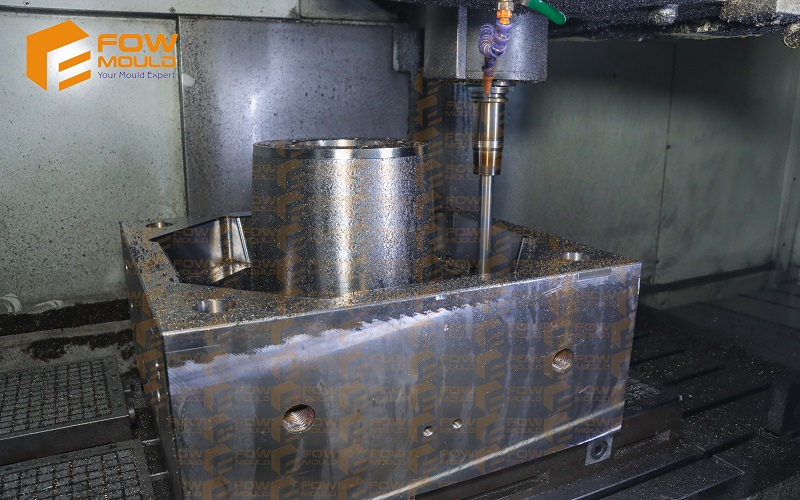
What Is Multi Cavity Mold?
A multi cavity mold refers to a mold with two or more cavities, capable of simultaneously producing multiple identical or different products in a single molding process.
In multi-cavity injection molding, the mold design includes runners and gates that allow molten plastic material to flow to each cavity with similar filling, packing, holding, and cooling times, ensuring consistency in the quality of plastic products within each cavity.
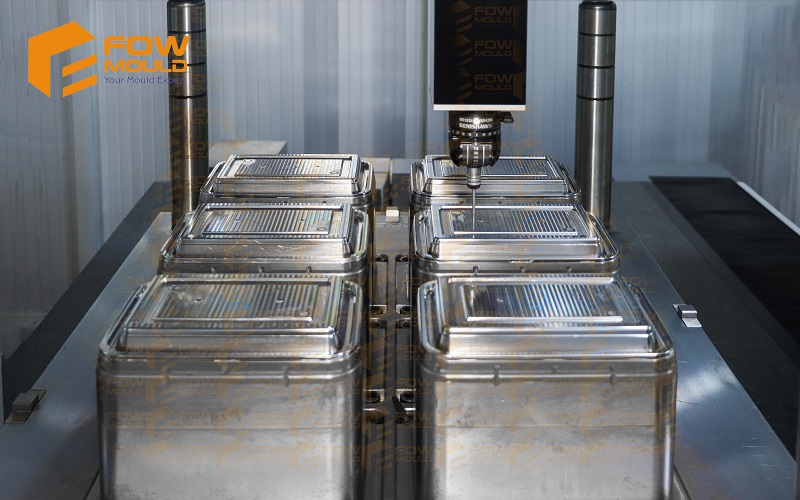
Structure Of Single Cavity Mould And Multi Cavity Mould
The structure of a single cavity mold primarily includes an upper template and a lower template, with a plastic molding mechanism set between their opposing side walls.
This mold structure features a single cavity used for manufacturing individual parts, making it the simplest mold structure.
In practical applications, single cavity molds are often used for producing products in smaller quantities or those that are cost-sensitive.
The structure of a multi cavity mold mainly includes an upper template, lower template, sliders, mold cores, mold base, guiding mechanism, ejector pins, springs, and a cooling system.
The runner system in multi cavity molds typically adopts an “H” shaped design, ensuring that the flow paths from the injection nozzle to each cavity are geometrically symmetrical.
This is also known as a “geometric balance” or “natural balance” runner system design.
This design ensures consistent filling, packing, and cooling times for each cavity, thereby ensuring the quality consistency of each part.
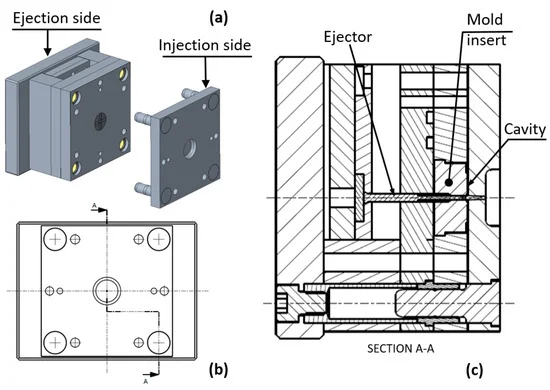
Advantages Of Single Cavity Mold
The specific advantages of single cavity mold are as follows:
- Simple structure
- Low manufacturing cost
- High design flexibility
- Easy control of process parameters
Additionally, single cavity molds are suitable for special processes such as two-color injection molding.
This technology allows for the production of products with two different materials while simplifying mold design and reducing the working space required for the injection molding machine, further lowering investment and energy consumption.
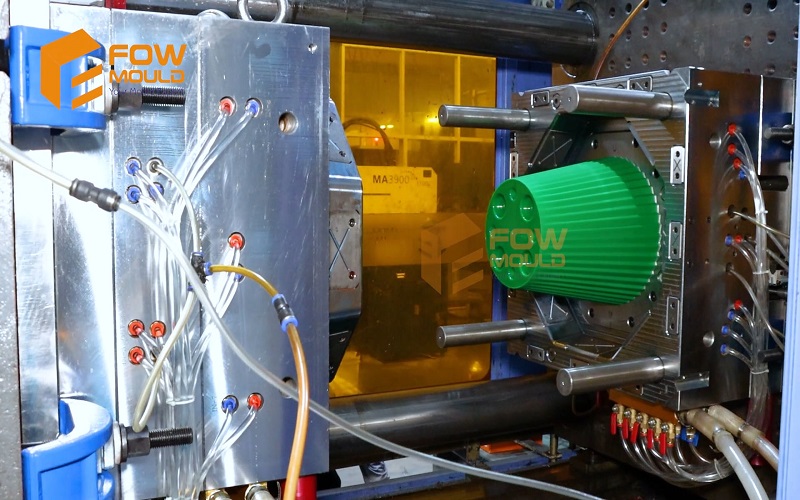
Disadvantages Of Single Cavity Mold
The disadvantages of single-cavity molds include:
- Low production efficiency
Since single cavity mould can only produce one product at a time, their production efficiency is lower compared to multi cavity molds.
- High production cost per part
Although the manufacturing cost of single cavity mould is lower, the low production efficiency results in a higher cost per part.
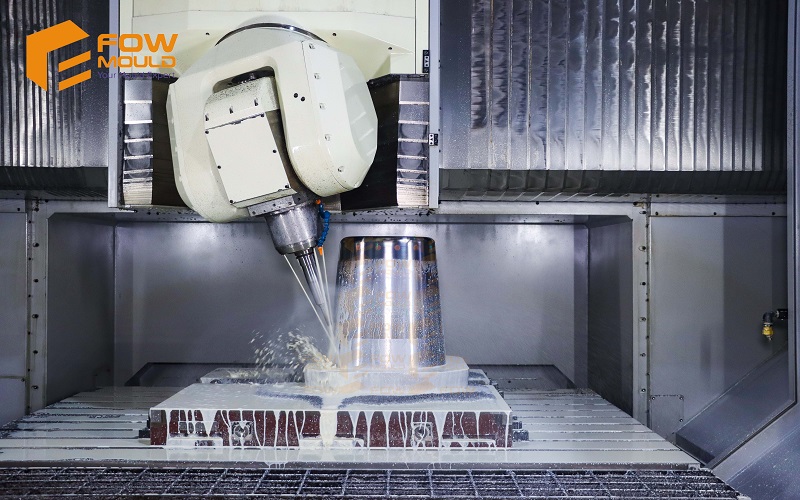
Advantages Of Multi Cavity Mold
Compared to single cavity molds, multi-cavity molds offer significant advantages in terms of production efficiency and cost:
- Increased Production Efficiency
Multi-cavity mold can significantly boost the production capacity of injection-molded products, typically increasing capacity by 60-80%.
This is due to their design, which ensures smooth material flow, thereby improving the quality of the molded parts.
- Reduced Production Costs
By controlling the unit cost of molded parts, multi cavity molds effectively reduce production costs.
For example, using an 8 cavity mold, the production cost per part can be reduced to ¥1, whereas using a 2 cavity mold to produce the same parts on the same machine results in a unit production cost of ¥4.
This can lead to substantial cost savings for high-volume production.
- Improved Product Quality
In multi cavity injection molds, the runner system is usually designed in an “H” shape, which helps enhance production efficiency and product quality.
With these advantages, multi cavity molds have greater competitiveness in large-scale production.
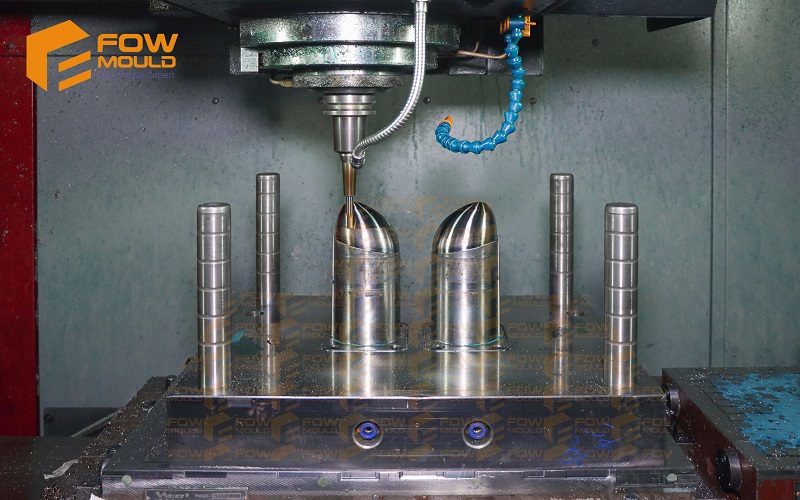
Disadvantages Of Multi Cavity Mold
Although multi-cavity molds have significant advantages in increasing production efficiency and reducing costs, their limitations cannot be ignored:
Complex Design: Compared to single cavity or double cavity molds, multi cavity molds require more complex design and manufacturing processes, which also increase the mold’s manufacturing cost.
Longer Debugging Time: The debugging time for multi-cavity molds is usually longer than for single-cavity molds, especially when the multiple cavities are not perfectly balanced.
It requires more time to adjust and test to ensure all products meet quality standards.
High Technical Requirements: The design and manufacturing of multi cavity molds require professional technical support, including the use of simulation software to predict and solve potential issues, such as the Beaumont effect.
Therefore, comprehensive consideration of cost control, product quality assurance, and technical support is necessary.
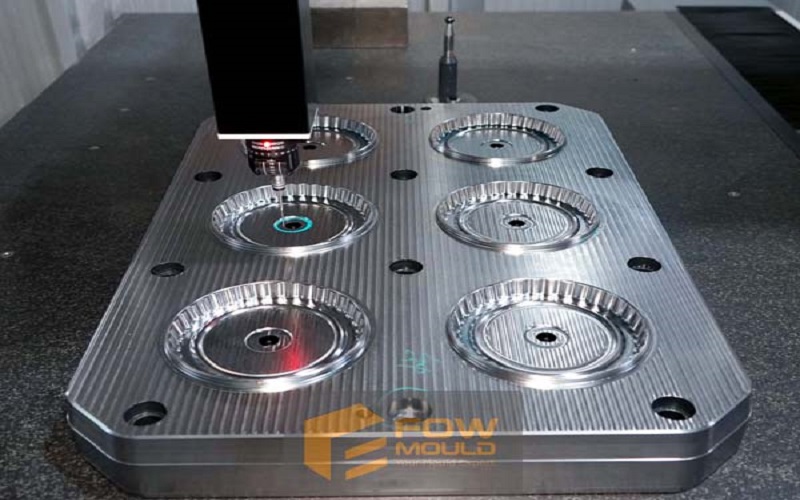
When To Use A Single Cavity Or A Multi Cavity Mold?
Single-cavity molds are primarily used to produce one part per cycle.
These molds are often used for manufacturing new products with uncertain market demand, as they help reduce the initial investment risk.
If the market response to the new product is positive, production can be scaled up by switching to multi-cavity molds.
Multi cavity molds create two or more identical copies of a part in a single cycle by using multiple cavities within one mold tool.
These molds are designed with runners and gates that allow molten plastic material to flow into each cavity with similar filling, packing, holding, and cooling times, thereby increasing production efficiency.
Multi cavity molds are particularly suitable for situations that require mass production of identical products.
In the injection molding process of plastic products, they can significantly increase capacity, reduce production costs, and ensure product quality consistency.
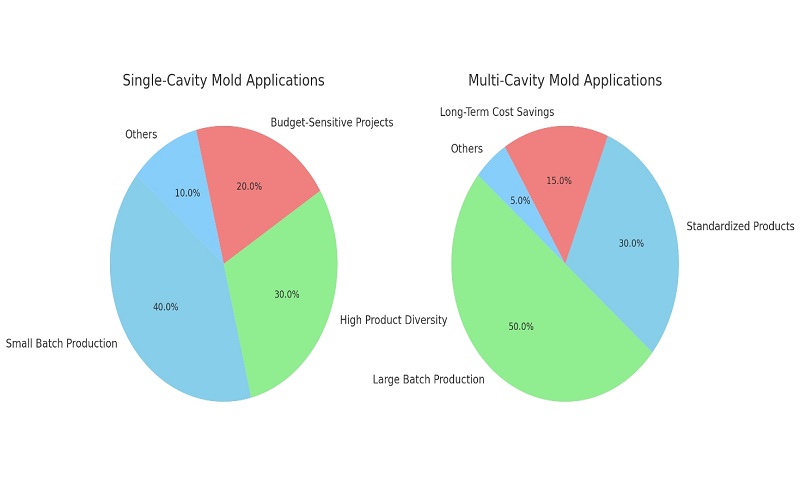
Function of Injection Molding Cavities
The injection molding cavities refers to the number of cavities that can be formed in a single injection molding process.
This number can range from one to a maximum of 192, depending on the mold design requirements and production conditions.
The number of cavities directly affects the quantity of products formed in each molding cycle.
The more cavities there are, the more products can be produced per cycle, thus reducing the production cost per part.
For example, in single cavity injection molding, the mold contains only one cavity, so only one product can be produced per injection cycle.
This method is suitable for small batch production or situations where molds need to be frequently changed, as its design and manufacturing costs are lower, the debugging time is shorter, and it offers high flexibility.
In contrast, multi cavity injection molding involves molds with multiple cavities, allowing multiple products to be produced simultaneously in one injection cycle.
This method is suitable for mass production because it can significantly increase production efficiency and reduce the unit cost of each part.
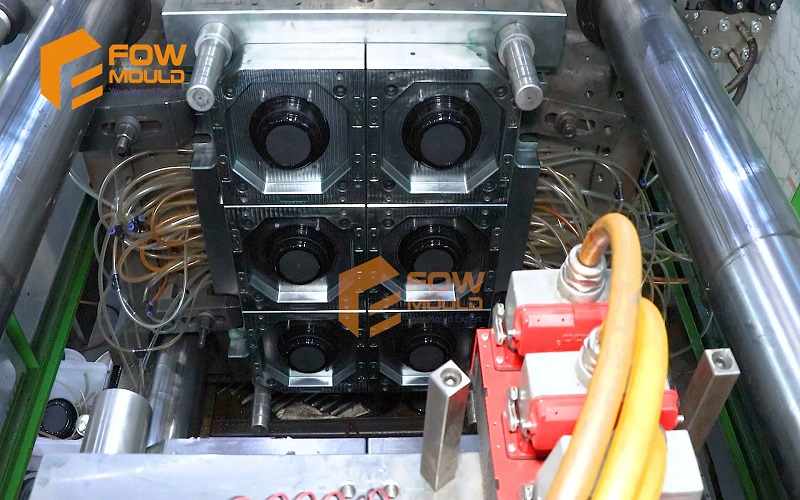
Single Cavity vs Multi Cavity Mold:How to Choose?
Choosing between single cavity and multi cavity molds requires considering product characteristics, production scale, equipment conditions, and costs.
Single cavity molds are suitable for large or simple products, offering lower costs and easier maintenance, making them ideal for budget-limited or small-scale production.
Although multi-cavity molds have higher initial and maintenance costs, they can improve production efficiency for large and complex products.
For new products with uncertain market demand, starting with a single-cavity mold for trial production is advisable.
If sales perform well, switching to a multi-cavity mold for large-scale production can be considered.
When determining the number of cavities, it is also important to consider the technical parameters of the injection molding machine and the technical and economic requirements of the parts.
The number of cavities should be chosen based on production efficiency and part precision, followed by selecting or verifying the appropriate injection molding machine.
Balancing production needs, cost efficiency, and product quality is key to selecting the appropriate number of mold cavities.
This ensures that the mold meets production goals and achieves optimal economic benefits.
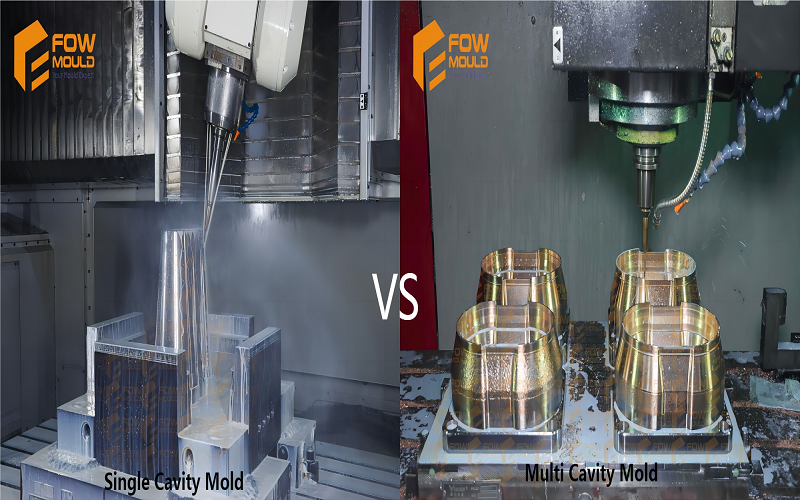
Custom Injection Molding Manufacturer——FOWMOULD
As a leading injection molding manufacturer in China, FOWMOULD is dedicated to providing one-stop injection molding services, offering customized solutions to meet our clients’ needs.
From injection mold design and manufacturing to plastic injection molding, FOWMOULD has a complete production chain and extensive manufacturing experience.
We offer not only single cavity and multi cavity molds but also multi-layer molds and two-shot injection molds tailored to our clients’ specific requirements.
Whether it is small batch production or large-scale manufacturing, FOWMOULD is your trusted partner. Contact us to get a free quote!
